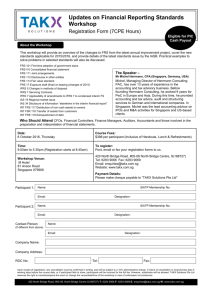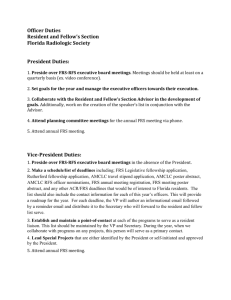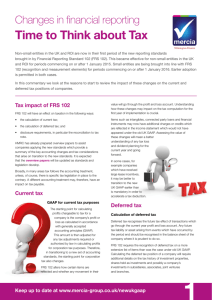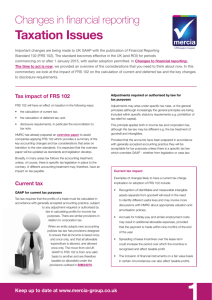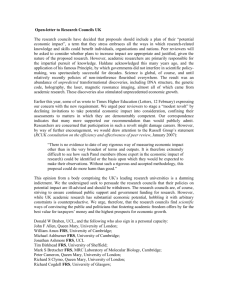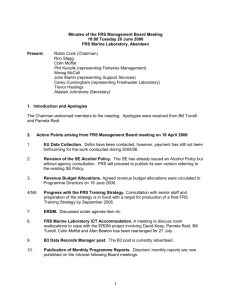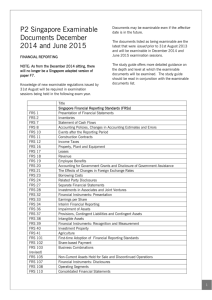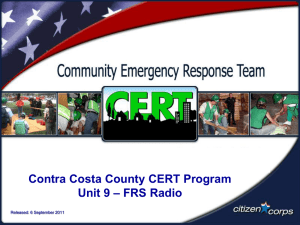SFRS for Smaill Entities
advertisement
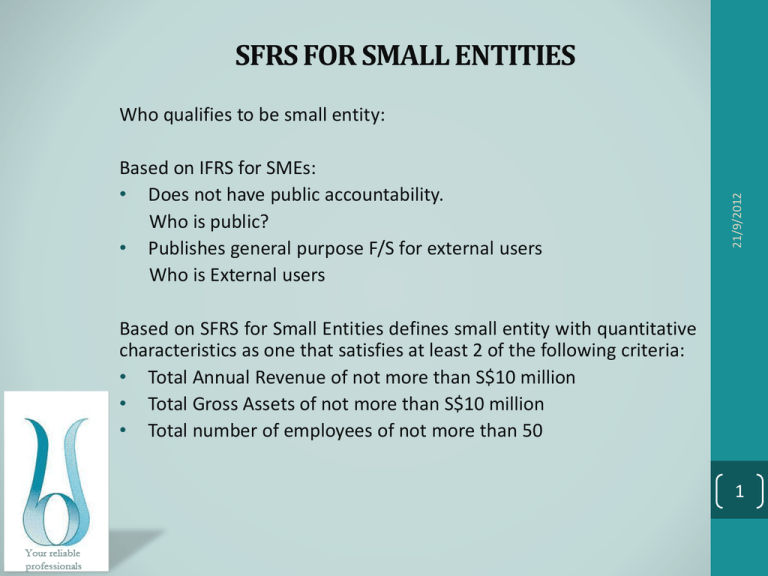
SFRS FOR SMALL ENTITIES Based on IFRS for SMEs: • Does not have public accountability. Who is public? • Publishes general purpose F/S for external users Who is External users 21/9/2012 Who qualifies to be small entity: Based on SFRS for Small Entities defines small entity with quantitative characteristics as one that satisfies at least 2 of the following criteria: • Total Annual Revenue of not more than S$10 million • Total Gross Assets of not more than S$10 million • Total number of employees of not more than 50 1 What is better in SFRS for Small Entities? • Remove alternative accounting treatments that are not relevant to small entities • Reduce reporting requirements by removing certain accounting topics and disclosure requirements that is not relevant to small businesses. 21/9/2012 Clear and Concise language to simplify preparation of F/S by achieving the following: The following topics are removed from SFRS for small entities • • • • Earnings per share (FRS 33) Interim financial reporting (FRS 34) Segment reporting (FRS 108) Accounting for assets held for sales and discontinued Operations (FRS 105) • Insurance Contracts (FRS 104) 2 Key Difference in Disclosure Requirements • Puttable Instruments are financial instrument that gives the holder the right to put the instrument back to the issuer for cash or another financial asset or is automatically put back to the issuer on occurrence of an uncertain future event or the death or retirement of the instrument holder. 21/9/2012 • Section 4 requires binding sale agreement to major disposal of assets and further analysis of trade and other payables balances are required but does not cover puttable instruments which FRS 1 requires specific disclosure. • Section 5 only specify 3 types of other comprehensive income and they are as follows: • Gain and loss arising from currency translation in foreign operations. • Actuarial gain or loss from Employment Benefits • Changes in fair value of Hedging Instruments. FRS 1 requires additional components which include reclassifications and their tax effects. 3 • Section 3 & 6 allow Companies to present a single statement of Income and Retained Earnings. Exemption is given from presenting statement of comprehensive income and statement of equity if the comprehensive income statements comprised of only the following: • Profit/Loss • Dividends • Prior years errors 21/9/2012 Key Difference in Disclosure Requirements (Continue) See Example in the IFRS Sample for single statement. • Section 11 & 12 gives Companies an option to either apply Section 11 & 12 or FRS 39. If you apply small entity Standards, no disclosure requirements on fair value of each class of financial assets and liabilities and risk management disclosures. 4 • Section16 requires Investment Properties (FRS 40) which is being accounted for as PPE under Section 17. No disclosure of fair value of that property is needed before the transfer is required. Give Example. • Section 27, lesser disclosure required for impairment of non financial assets (FRS 36). There is no need to disclose the events and circumstances that led to recognition or reversal of impairment. What is impairment of non financial assets? • Section 29, income tax (FRS 12) disclosure does not include impact of investment, discontinued operations and dividend paid. Additional disclosure on the level of uncertainty the tax authority will accept the reported tax provisions. Like legal cases, we need to use the probability-weighted average amount. Give Example. • Section 33, Related Parties transactions (FRS 24)only requires disclosure of transactions from entities where management has control (Old definition) and key management compensation. 21/9/2012 Key Difference in Disclosure Requirements (Continue) 5 Changes that will impact profits • Section 14 requires investment in Associates Company to be measured at fair value through profit and loss while FRS 28 measure it using the equity method. 21/9/2012 Investment in Associates which is quoted in Stock Exchange Investment in Joint Ventures which is quoted in Stock Exchange • Section 15 requires investment in Joint Ventures to be measured at fair value through profit and loss while FRS 31 measure it using equity method or proportionate consolidation method. • Treatment of JV under FRS 31 include assessing the party’s involvement in the project. If passive, should be treated like other investments (AFS) subject to fair valuation. 6 Changes that will impact profits (Continue) • Section 16 requires investment property after the initial recognition to be measure at fair value through profit or loss. • FRS 40 give company an option between fair value model and the cost model. Explain. 21/9/2012 Investment Properties with reliable fair values Goodwill and other intangible assets with indefinite life • Section 18 & 19 requires Company to amortize them over estimated useful life. If the estimated useful life cannot be determined, 10 years plus review for impairment. • FRS 36 & 38 requires test for impairment. For Goodwill, it must be stated at fair value. How to measure Fair Value? 7 Changes that will impact profits (Continue) • Section 18 recognized all development expenses in the profit and loss immediately. • FRS 38 capitalize costs if six conditions are satisfied and they are as follows: • Technical Feasibility • Intention to complete for use or sale • Ability to use or sell • Future Economic Benefits proof existence of market or improve productivity in use • Adequate financial and other resources to complete the development • Expenditure can be determined reliably. 21/9/2012 Development Cost (Intangibles) 8 Changes that will impact profits (Continue) • Section 25 recognized as expenses in profit and loss immediately. 21/9/2012 Borrowing Cost • FRS 23 requires cost directly attributable to the acquisition, construction or production of assets that produces income in future. These interests are included in the value of the asset and depreciated over the useful life on a straight line basis. 9 Changes that will impact profits (Continue) • Section 28 recognized the gain or loss in profit and loss immediately. • • • • 21/9/2012 Actuarial gain or loss on defined benefit plans FRS 19 provided several options and they are as follows: Corridor approach Systematic basis Period of occurrence in other comprehensive income. 10 • • • • • • • • • • • • • Section 1 – Definition of SME Size Entities Section 2 – Concepts and Principles Section 3 – Financial Statement Presentation Section 4 – Statement of Financial Position Section 5 – Statement of Comprehensive Income Section 6 – Statement of Change of Equity Section 7 – Statement of Cash Flows Section 8 – Notes to the Financial statements Section 9 – Consolidation and Separate FS Section 10 – Accounting Policies, Estimates and Errors Section 11 – Basic Financial Instruments Section 12 – Other Financial Instruments Section 13 - Inventories 21/9/2012 Summary of SFRS for SME 11 • • • • • • • • • • • • • Section 14 – Investment in Associates Section 15 – Investment in Joint Venture Section 16 – Investment Properties Section 17 – Property, Plant and Equipment Section 18 – Intangible Assets and Goodwill Section 19 – Business Combination Section 20 – Leases Section 21 – Provisions and Contingencies Section 22 – Liabilities and Equity Section 23 – Revenue Section 24 – Government Grants Section 25 – Borrowing Cost Section 26 – Share base payments 21/9/2012 Summary of SFRS for SME 12 • • • • • • • Section 27 – Impairment of assets Section 28 – Employees’ Benefits Section 29 – Income tax Section 30 - Foreign Currency Transaction Section 31 – Hyper inflation Section 32 – Events after the end of reporting period Section 33 – Related parties disclosure 21/9/2012 Summary of SFRS for SME 13
